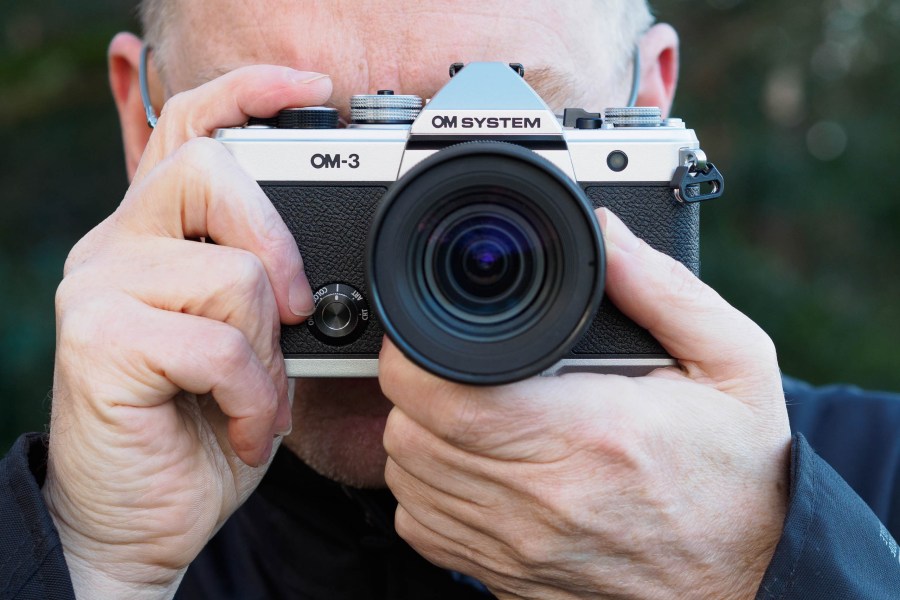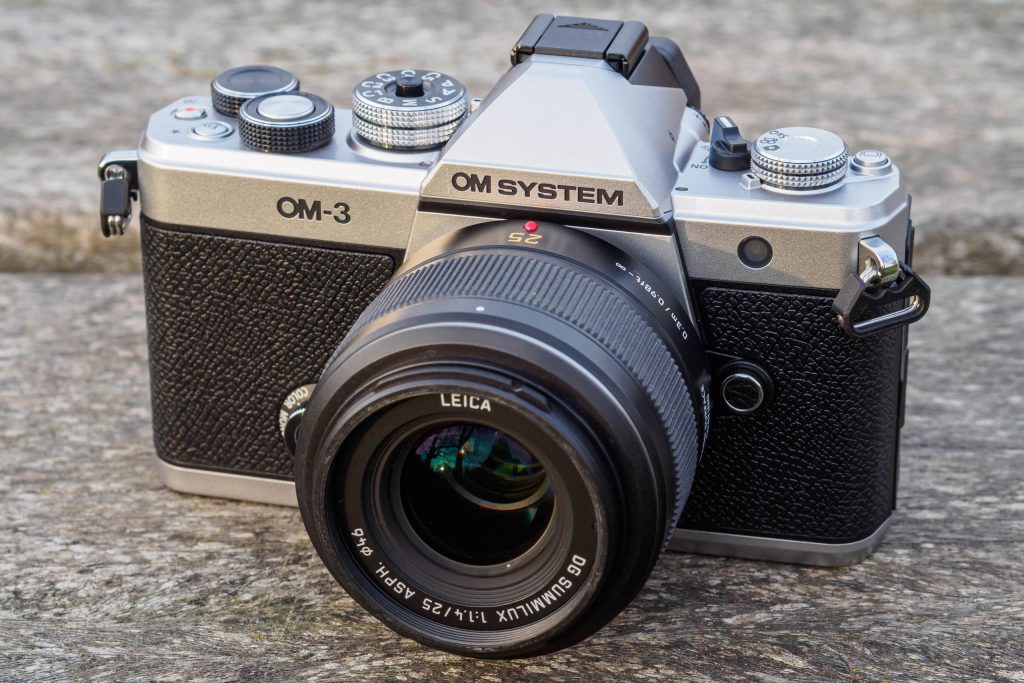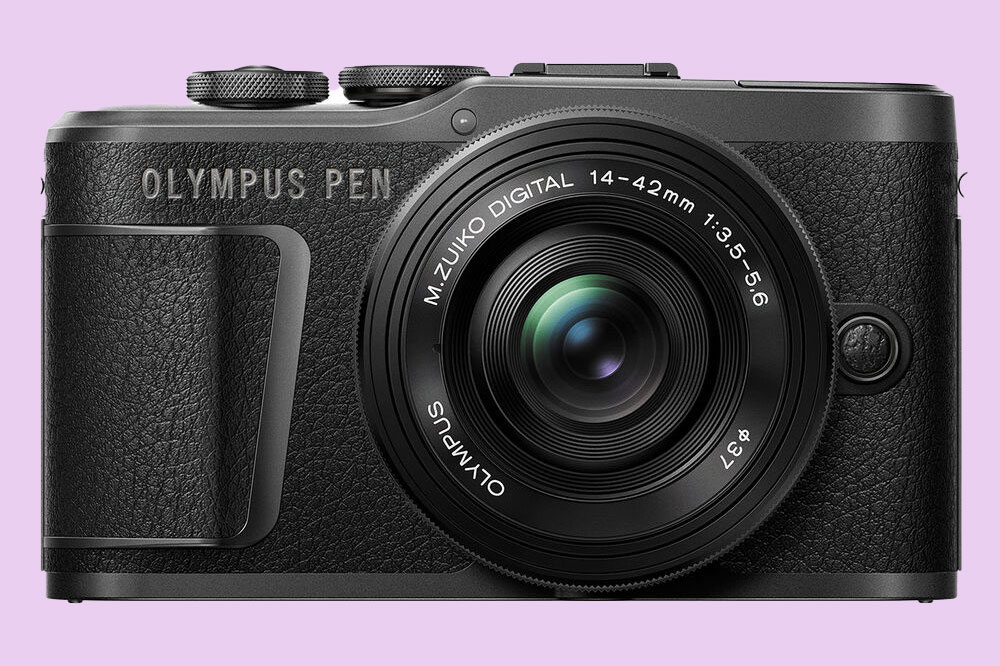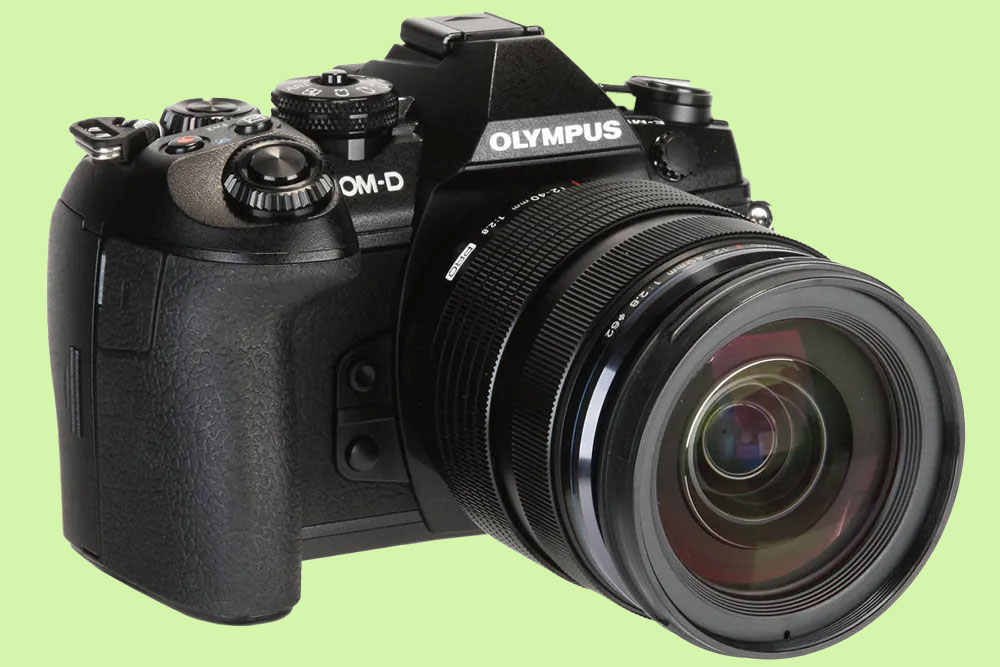Welcome to our guide to the best Olympus cameras — that’s to say, our guide to the best OM System cameras. Following the sale of the Olympus imaging division to OM Digital Solutions in 2021, the brand has undergone a phoenix-like rebirth, releasing a new slate of cameras and lenses that update the Olympus brand without reinventing it. So, no matter whether you opt for a new OM System camera or an older Olympus-branded model from the second-hand market, you’re still getting a brilliant camera.
Olympus and OM System cameras fall into one of two main categories — Micro Four Thirds mirrorless and tough compact. For a more detailed look at the various lines on offer you can scroll to the bottom of this page to find out ‘How to choose’ section, but the upshot is that there’s a broad selection of cameras to suit users of all budgets and ability levels. To name a few: the Olympus OM-D E-M10 Mark IV is suited to beginner photographers, the OM System OM-1 Mark II is the current professional flagship, the OM System OM-5 is brilliant for travel, and the OM System Tough TG-7 is a superb waterproof camera for beaches and snorkelling (and more).
Our review team has tested, rated and evaluated all these cameras, and the inclusions on this list are based on our reviews. We only recommend cameras we feel are genuinely worth the price you pay for them — and we’ve also included a second-hand section for those whose budgets are a bit tighter. Bear in mind that if you choose a mirrorless camera, you’ll also need one of the best Micro Four Thirds lenses (or the best Micro Four Thirds zoom lenses) to go with it.
The best OM System and Olympus cameras – our quick list
Looking for the best deal on OM System and Olympus cameras? Not only will you find the best OM System and Olympus cameras, but also some of the best camera deals, as our ‘Buy now’ buttons are set to automatically take you to the best prices from trusted retailers. You’ll also find a list of other retailers below each camera, so you can find the right deal for you.
- Best Olympus camera overall: OM System OM-1 Mark II – Buy now
- Best Olympus / OM System camera for travel: OM System OM-5 – Buy now
- Best Olympus camera for most people, and beginners: Olympus OM-D E-M10 Mark IV – Buy now
- Best Olympus camera for enthusiasts: OM System Olympus OM-1 – Buy now
- Best Olympus camera for Instagram: Olympus PEN E-P7 – Buy now
- Best waterproof Olympus camera: OM System Tough TG-7 – Buy now
- Best retro Olympus / OM System camera: OM System OM-3 – Buy now
And the best used Olympus cameras to buy:
- Best used Olympus camera for influencers: Olympus PEN E-PL10 – Buy now
- Best used Olympus camera for professionals: Olympus OM-D E-M1 Mark III – Buy now
- Best used Olympus camera for sports and action: Olympus OM-D E-M1X – Buy now
- Best used Olympus camera for travel: Olympus OM-D E-M5 Mark III – Buy now
- Best budget used Olympus camera for enthusiasts: Olympus OM-D E-M1 Mark II – Buy now
Why you can trust Amateur Photographer
We spend many hours testing every product we recommend, in detail, in a variety of situations and shooting scenarios, and only use experts for our reviews, so you can be sure that you’re getting the best products. Find out more about our expert writers.
So now, let’s get started with the best Olympus and OM-System cameras you can buy, for all users and budgets…
Best OM-System and Olympus cameras in 2025
These are the OM System and Olympus cameras you can buy new. There are plenty of older models still worth buying on the used market, and we have a section on the best used Olympus cameras below. Here, though, are the best OM System cameras to buy right now, as well as the more recent Olympus cameras which haven’t yet received an OM System makeover.
All prices listed are snapshots from the date of publication and, as such, are subject to change.
BEST OVERALL
Best Olympus camera overall: OM System OM-1 Mark II

Amateur Photographer verdict
OM System’s flagship camera gets one step better – the OM-1 Mark II is a welcome update to what was already an impressively intelligent high-speed shooter.- Outstanding computational features
- Built-in Live Grad ND
- Super-fast burst shooting
- Some limitations in video
- Not a huge jump from OM-1
Specifications at a glance:
| Camera type | Mirrorless |
| Sensor | 20MP Four Thirds Stacked BSI Live MOS sensor |
| Continuous shooting | 50fps with C-AF, 120fps fixed AF with extended buffer |
| ISO | ISO 80 – ISO 102,400 (extended) |
| Image stabilisation | Up to 8.5 with Sync IS lenses |
| Video | 4K 60p, Full HD 240fps |
The latest flagship camera from OM System, the OM-1 Mark II doesn’t deviate far from the inaugural OM-1 (which you’ll meet further down this list). However, it adds a number of clever upgrades that make it a worthy investment for those who want an outstanding Micro Four Thirds mirrorless camera, particularly for stills photography. We gave it the full five stars in our review, finding the OM-1 Mark II to be a delight to use – and streets ahead of the competition in many ways.
The OM-1 Mark II can burst-shoot at up to 120fps with fixed AF, or 50fps with continuous AF. To get the equivalent on a full-frame system, you’d have to triple your budget and opt for the Sony A9 III, a notion that’s simply a non-starter for most people. While the previous OM-1 could also achieve these speeds, the buffer for the Mark II has been significantly improved – doubled, in fact. It can now manage more than 200 continuous raw shots in both modes.
Other new additions include the world’s first in-camera live graduated ND filter, helping you to control those bright skies for balanced exposure. Stabilisation has been improved, autofocus is snappier, with effective subject-detection. It’s a real triumph of a camera.
True, if you already own the OM-1, it’s unlikely these updates are enough to justify the expense of upgrading. And indeed, the release of the Mark II has already seen discounts coming to the OM-1 in some territories, making it more viable for many photographers. However, if you want the best that Olympus and OM System have to offer, this is it right here.
Best for: professional and serious amateur photographers who want the best
Read our full five-star review of the OM System OM-1 Mark II
BEST FOR TRAVEL
Best Olympus/OM System camera for travel: OM SYSTEM OM-5
Amateur Photographer verdict
With OM System’s robust weather sealing and some of the best stabilisation in the business, the OM-5 is a dream choice for travel photographers.- Robust, IP53 weather sealing
- Exceptionally good stabilisation
- Terrific JPEG output
- Uses old-style Olympus menus
- Buffer fills up fast at 30fps
Specifications at a glance:
| Camera type | Mirrorless |
| Sensor | 20.4MP Four Thirds sensor |
| Continuous shooting | 30fps shooting |
| ISO | ISO 200-6400 (extended: L64-25600) |
| Image stabilisation | 6.5 stops, or 7.5 stops with Sync IS lenses |
| Video | 4K 30p video |
After the success of the ‘Olympus’ OM-1, the OM SYSTEM OM-5 was like that difficult second album. The revitalised brand had shown promise under its new hands, but consistency would be the key to a long-term future. Fears proved unfounded – the OM System OM-5 turned out to be a delight and triumph. As a replacement for the E-M5 series, it represents the middle of the range, and so delivers a lightweight build with high-speed shooting, and for a much lower price than the OM-1.
One key advantage the OM-5 brings compared to the previous E-M5 cameras is its significantly improved weather-sealing. The OM-5 is IP53 rated and is the most affordable camera with that rating currently available. It means you can venture fearlessly into nature without worrying about a sudden downpour ruining your camera. Image quality is excellent too; the OM-5 produces great-looking JPEGs that need minimal editing to look fantastic – perfect for those who’d rather be behind a camera than in front of a computer.
The OM-5’s relatively slim dimensions, robust weather-sealing and array of shooting options should lend it to travel photography. Our editor Nigel Atherton put this theory into practice with an OM-System OM-5 field test in Cape Town, South Africa. His conclusion was that the O-M5 was pretty much the perfect travel camera, giving him all the features he needed, and a few extras on top. It nailed the shots time and again, in pristine quality – can you ask much more of a camera than that?
If we have a gripe, it is that OM System could have found room to include the newer style of menus brought in with the OM-1; rather than relying on the old Olympus menu system, in which features can often be maddeningly difficult to find. Softening the blow a little is the MyMenu section, which does make it easier to jump to your preferred functions.
Fast, high-quality and robust, the OM System OM-5 heralds great things for the future of the brand, and injects some real life into the Micro Four Thirds system. We’re huge fans, and gave it the full five stars in our review.
Best for: wildlife and outdoor photography
Read our full review of the OM SYSTEM OM-5
BEST FOR BEGINNERS
Best Olympus camera for most people, including beginners: Olympus OM-D E-M10 Mark IV
Amateur Photographer verdict
A lovely little camera that’s a joy to use and delivers great pictures, the E-M10 Mark IV features a flip screen and comfortable handgrip, making it an excellent choice for beginners.- Optimised for beginners
- Front-facing screen option
- Well-made handgrip
- Flip-screen doesn’t work with tripod
- No mic socket
Specifications at a glance:
| Camera type | Mirrorless |
| Sensor | 20MP Four Thirds sensor |
| Continuous shooting | 6.3 with continuous AF, 15 fps with fixed focus electronic shutter |
| ISO | ISO 200-6400, ISO 80-25,600 (extended) |
| Image stabilisation | Up to 4.5 stops |
| Video | 4K 30p, Full HD 60p |
The Olympus OM-D E-M10 Mark IV is an enduringly popular mirrorless camera: for an entry-level model in the Olympus / OM-System range, it’s currently your best option. This will remain the case until OM-System brings out an OM-10, which we hope they do soon. Still, the E-M10 is a cracking camera in its own right, achieving a near-perfect score in our review.
It’s immensely easy to just pick up and use, with superb JPEG output resulting in images that look very attractive straight out of camera. Though the body is small, the controls are sensibly laid out and the handling never feels cramped. The stabilisation is highly effective too – some of the best you can get on an entry-level mirrorless camera, in fact.
The E-M10 Mark IV is one of our favourite small mirrorless cameras, especially given that the MFT system is blessed with a terrific range of portable, high-quality lenses. If you’re looking for a travel-friendly mirrorless camera, it’s one of the best choices you can make, although if you do need weather-sealing, then look to the OM-5.
Best for: most people, as well as budding and emerging photographers
An almost perfect score – read our opinion on the Olympus OM-D E-M10 Mark IV
BEST FOR ENTHUSIASTS
Best Olympus camera for enthusiasts: OM System ‘Olympus’ OM-1
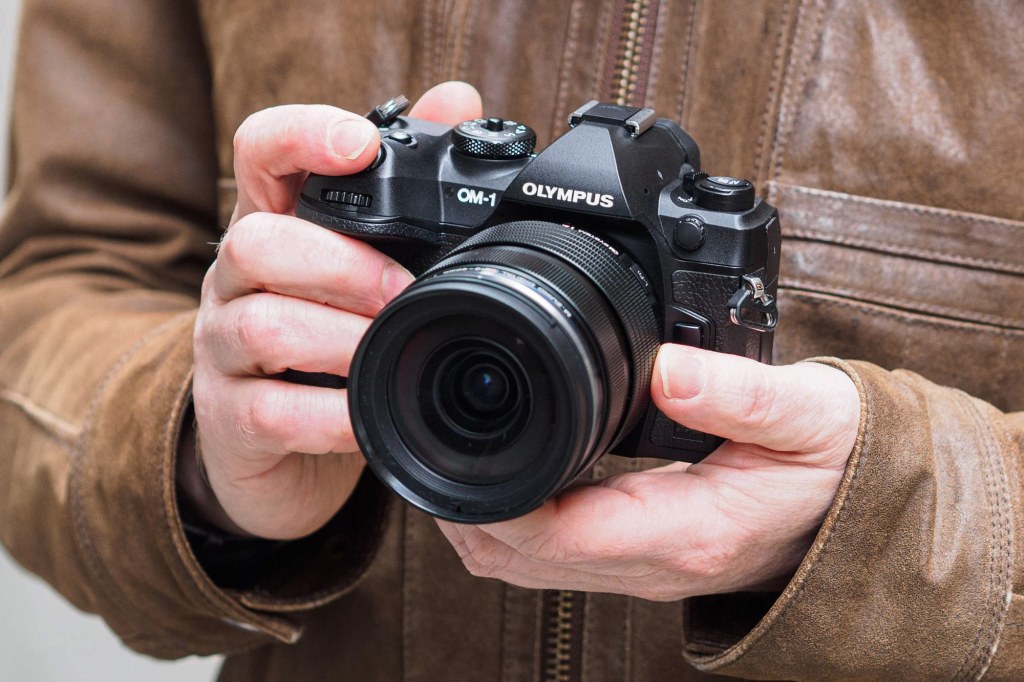
Amateur Photographer verdict
It goes beyond what you would expect from a £2000 camera in terms of subject detection AF, high-speed performance, and the sheer number of useful shooting features available.- Incredible burst capabilities
- Streamlined handling
- IP53 weather-rating
- Price drop after release of Mark II
- Menus not touch sensitive
Specifications at a glance:
| Camera type | Mirrorless |
| Sensor | 20MP Four Thirds Stacked BSI Live MOS sensor |
| Continuous shooting | 50fps with C-AF, up to 120fps fixed AF |
| ISO | ISO 80 – ISO 102,400 (extended) |
| Image stabilisation | Up to 8 stops |
| Video | CINE 4K 60fps |
* difficult to source in the USA at time of publishing
How much do we love the OM-System OM-1? Well, first we gave it the full five stars in our review. We were seriously impressed with this camera, praising its super-fast shooting speeds and sophisticated AF enabled by its new BSI stacked live MOS sensor. Absolutely packed with features, the Mark 1 had a lot to live up to as the first representative of the new OM-System range, following the sale of Olympus to OM Digital Solutions. It passed with flying colours.
We wanted to see how the OM-1 would handle high-speed bird photography and capturing bird-in-flight images, so we took it out for a bird photography field test with wildlife photographer Tesni Ward. The camera performed extremely well, with the blackout-free burst shooting making it easy to get super-sharp images of fleeting moments.
Then there’s the weatherproofing, the superb image quality, the high-resolution viewfinder… we could go on. While it has since been eclipsed by the OM-1 Mark II, the ‘Olympus’ OM-1 is still available – and we’ve spotted a few tempting discounts that could make it the superior choice for the enthusiast rather than the professional.
Best for: Professional photographers and high-speed shooting
We gave the OM System Olympus OM-1 5 Stars – read our review
BEST FOR INSTAGRAM
Best Olympus camera for Instagram: Olympus PEN E-P7
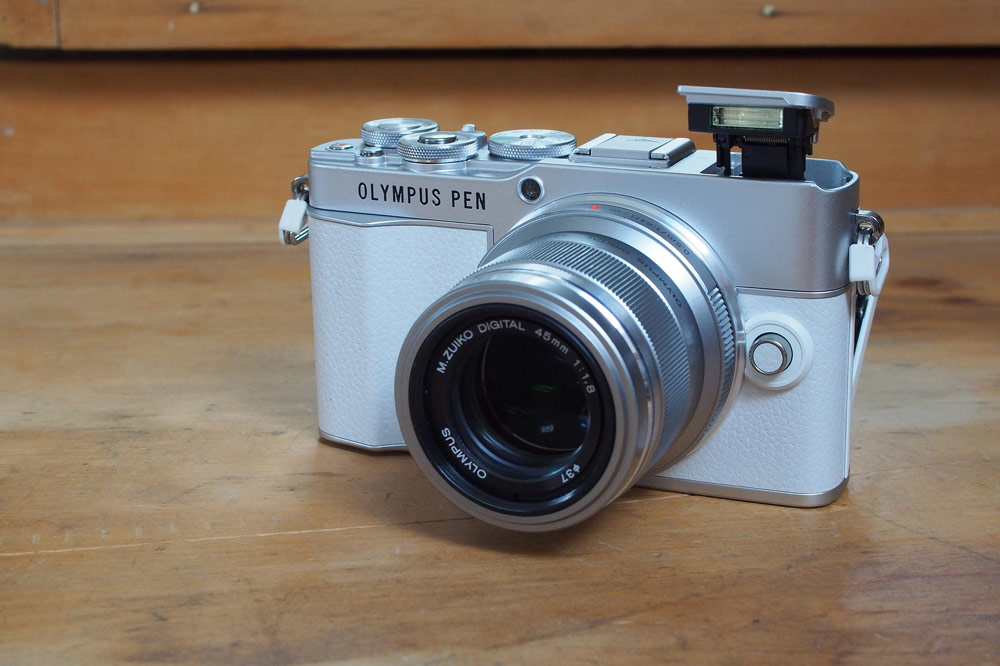
Amateur Photographer verdict
Combined with the 14-42mm EZ pancake lens, the E-P7 is a compact, go-anywhere camera that produces some great-looking images, but the price is hard to swallow.- Incredibly lightweight
- Very good image quality
- Physical control dials
- Body build a little flimsy
- Expensive asking price (try second-hand)
- Not available in the US
Specifications at a glance:
| Camera type | Mirrorless |
| Sensor | 20.3MP Four Thirds Live MOS Sensor |
| Continuous shooting | 15fps with electronic shutter |
| ISO | ISO 100 – ISO 25600 (extended) |
| Image stabilisation | Up to 4.5 stops |
| Video | 4K UHD 30, 25, 24p |
While the OM-1 was technically the first branded OM-System camera, the first model to be launched under the new management was actually this one – the capable little Olympus PEN E-P7. The PEN range is sometimes forgotten about in discussions of the various merits of Micro Four Thirds cameras, but the PEN E-P7 is well worth considering.
For a start, it’s very lightweight at just 337g body-only (and there are plenty of MFT lenses that won’t add a lot to that). It’s a sprightly shooter, able to manage up to 8.7fps with its mechanical shutter or up to 15fps if you switch to the electronic. It’s an ideal choice for those who don’t want to spend too much time editing their images in post-processing – the JPEG output is first-rate, and it also includes a number of stylish monochrome and colour picture profiles for giving your images a specific look.
It is still on the pricey side arguably, especially given that the cheaper E-M10 Mark IV is of better build quality and has an electronic viewfinder. Still, you may prefer the slim, stylish form factor of the PEN EP-7.
Best for: Social media
Olympus PEN E-P7 in-depth review
BEST WATERPROOF CAMERA
Best waterproof OM System camera: OM System Tough TG-7
Amateur Photographer verdict
Waterproof, freezeproof, shockproof, with a 12MP sensor, 4x optical zoom and a bright F2.0 aperture. With its compact size and durable design it is an obvious choice for adventurers- Incredibly tough
- Optical zoom lens
- Huge number of accessories available
- Small sensor impacts image quality
Specifications at a glance:
| Camera type | Compact with 4x optical zoom, 25-100mm (35mm equivalent) |
| Sensor | 12MP 1/2.33” CMOS image sensor |
| Waterproof | Down to 15m |
| Shock resistant | 2.1m (dropping from height), crushproof (100kg), freezeproof (-10°C) |
| Image stabilisation | Up to 2.5 stops |
| Video | 4K 30/25p |
The Tough TG-7 is OM-System’s quick update to a much-loved series of tough cameras. It doesn’t change a great deal from the previous Olympus Tough TG-6 – it’s still based around the combination of a 12MP 1/2.3-inch sensor and a 25-100mm equivalent optical zoom lens. All this is encased in a super-tough body that’s waterproof, shockproof, freezeproof, etc. Again, much the same deal as the TG-6.
Lots of the key additions to the TG-7 are subtle, but welcome. The micro USB connection has been upgraded to the faster and more robust USB-C; you can now create time-lapse movies in-camera; the TG-7 supports vertical video recording (handy for TikTok / Instagram Reels); and the camera is now compatible with a separately sold remote.
There’s also a raft of accessories available to customise the TG-7, including a protective silicone jacket, some macro lights, underwater housing to extend the diving depth of the camera, fisheye/telephoto lens converters, and more. All this goes to assure the TG series’ continued dominance as the best tough compacts on the market.
Best for: Amateurs and adventurous types
Read our OM-System Tough TG-7 review.
BEST RETRO DESIGN
Best retro Olympus / OM-System camera – OM System OM-3
Amateur Photographer verdict
The OM System OM-3 is a fabulous camera; a joy to shoot with and gives excellent results, thanks to its computational features and creative colour modes. It looks beautiful, too.- Handsome retro design with robust, weather-sealed construction
- Unique creative colour controls
- Useful array of computation photography features
- Exceptional image stabilisation
- Excellent battery life
- Small, optically superb kit zoom
- No handgrip, either built-in or add-on
- Lacks external controls vs OM-1 Mark II and OM-5
Specifications at a glance:
| Camera type | Mirrorless |
| Sensor | 20MP Four Thirds stacked BSI Live MOS sensor |
| Continuous shooting | Up to 120fps |
| ISO | ISO 200-25,600 (standard) |
| Image stabilisation | 6.5 stops, 7.5 with Sync IS lenses |
| Video | CINE 4K 60fps video, Full HD up to 240fps |
This brand new release is worthy of inclusion under several categories! Its classic two-tone design is deliberately styled after Olympus OM 35mm film SLRs from the 1980s, and the body is almost exactly the same size. To be clear, though, the OM-3 isn’t related to its film namesake; its design is more inspired by the original OM-1.
Don’t be fooled by these retro looks, though. Inside the OM-3 is a thoroughly modern camera with all of OM System’s unique computational photography tricks, plus some compelling creative options. OM System has built the OM-3 around the same 20.4MP Four Thirds sensor and Truepic X processor as the OM-1 and OM-1 Mark II (not the same sensor as older models). As a result, it becomes the most affordable camera yet to employ a stacked CMOS sensor. This sensor also employs a quad-pixel design that enables cross-type phase-detection autofocus anywhere in the frame. It offers a standard sensitivity range of ISO 200-25,600 as standard, plus extended ISO 80-102,400 settings.
AI subject detection is included, and capable of recognising and focusing on humans, birds, animals, trains, cars, or airplanes. Unlike other recent cameras, though, there’s no auto mode onboard, so you have to select your subject type in advance. The stacked CMOS sensor’s rapid readout promises reliable subject recognition and tracking.
Our man, Andy Westlake, is quite smitten with this camera after testing it – feel the love and the reasons why in his full review.
Best used Olympus cameras
The pace of development of Olympus cameras has been relatively slow compared to other brands, but this has an upside, as cameras several years old can offer much of the power and performance of the later models. Better still, Olympus cameras don’t have the same cult following as some recently discontinued models from Fujifilm, for example, so the prices are much more realistic – the only exception is the beautiful Olympus PEN-F.
So here are some used Olympus cameras that are still definitely worth buying today. You can pick up pristine examples for half of what they originally cost and still have a camera every bit as capable as modern rivals.
BEST FOR INFLUENCERS
Best used Olympus camera for influencers: Olympus PEN E-PL10
Amateur Photographer verdict
A beginner-friendly, lightweight camera with 4K video capability, flip-down LCD screen and in-body image stabilisation- Silent shooting mode
- In-camera Raw processing
- Handy for beginners
- Not much improvement on E-PL9
- No viewfinder
Specifications at a glance:
| Camera type | Mirrorless |
| Sensor | 20.1 MP Four Thirds Live MOS sensor |
| Continuous shooting | 8.6 fps (14.1 with electronic shutter) |
| ISO | ISO LOW – 25600 in 1/3 or 1 EV ISO steps |
| Image stabilisation | Up to 3.5 stops 3 axis in-body image stabilisation |
| Video | 4K 30p and 24p |
The Olympus PEN E-PL10 was designed very much with the amateur photographer in mind. It comes with lots of beginner friendly shooting modes as well as advanced helpful features like in-body image stabilisation and in-camera Raw editing. This camera also includes a silent shooting mode, tiltable LCD screen and 4K movie quality, making it a desirable choice.
The Olympus E-PL10 is the upgrade to the E-PL9, and in all honesty there is little to distinguish them; although the image processor has been swapped to the faster TruePic VIII, which is found in many of Olympus higher end models. These days, new models seem to have vanished from the shelves, but you can generally find it for a decent price online. Look out for the E-PL9 too – it may be available even cheaper.
Best for: Beginners on a budget
BEST FOR PROFESSIONALS
Best used Olympus camera for professionals: Olympus OM-D E-M1 Mark III
Amateur Photographer verdict
Highly effective stabilisation and a well-designed control scheme combine to make the OM-D E-M1 Mark II a compelling choice for photographers.- Good control layout with AF joystick
- Effective in-body stabilisation
- Loads of shooting options
- Menus can be hard to navigate
- Relatively low resolution viewfinder
Specifications at a glance:
| Camera type | Mirrorless |
| Sensor | 20.4MP Four Thirds Live MOS sensor |
| Continuous shooting | 18fps shooting with C-AF |
| ISO | ISO 64-25,600 (extended) |
| Image stabilisation | Up to 7.5 stops |
| Video | 4K 30 Full HD 120p |
Released in February 2020, the Olympus OM-D E-M1 Mark III upgraded the Olympus OM-D E-M1 Mark II that was released three years prior. At first glance, we found the Mark III to look very similar to its predecessor but with the welcome addition of a joystick for selecting the AF area.
The biggest upgrade though was inside because the E-M1 Mark III debuted a new processor, the TruePic IX. This new processor allowed features from the E-M1X, including LiveND that mimics the effect of neutral density filters up to 5 stops, and a hand-held high-resolution multi-shot mode that outputs 50MP images. Essentially, the E-M1 Mark III was the camera the E-M1X should have been all along!
Other impressive features the E-M1 Mark III includes are a 4K movie shooting mode, 121-point superfast phase detection AF and an incredibly effective 5-axis in-body stabilisation. For those photographers whose profession takes them out and about, such as wildlife and sport, we also found the sturdy, extensive weather sealed body to live up to its promise.
The arrival of the OM-1 from OM SYSTEM has all but eclipsed the OM-D E-M1 Mark III, and it seems to have been effectively discontinued. You’ll probably have the best luck finding it on the used market, where you’ll get a fantastic discount on this all-around excellent camera.
OM System Olympus OM-1 vs Olympus E-M1 III: what’s the difference?
* scarce in the USA at time of publishing
Best for: Sports photographers on a budget
Read our review of the Olympus OM-D E-M1 Mark III
BEST FOR ACTION
Best used Olympus camera for sports and action: Olympus OM-D E-M1X

Amateur Photographer verdict
With high-speed shooting, autofocus tracking, in-body stabilisation and durability, the OM-D E-M1X cranks the dial to up 11- Very effective stabilisation
- Attractive, colour-accurate JPEGs
- Available at a good price second-hand
- Big for MFT
- Expensive when new
Specifications at a glance:
| Camera type | Mirrorless |
| Sensor | 20.4MP Four Thirds MOS sensor |
| Continuous shooting | 15fps shooting (10fps with C-AF) |
| ISO | 64-25,600 (extended) |
| Image stabilisation | Up to 7.5 stops |
| Video | CINE 4K 30p (OM-Log400 profile) |
Announced back in January 2019 the Olympus OM-D E-M1X was well received and included some great specs and influential technology; however since its launch other Olympus cameras (such as the E-M1 Mark III and the subsequent OM-1) have outperformed the E-M1X, pushing it down the pecking order.
On the plus side we found this camera to support a huge range of useful additional photographic features like its in-body stabilisation (up to 7.5 stops), support an efficient continuous autofocus and subject detection mode, and put out excellent JPEGs that are accurate in colour exposure. However, on the downside the lower ISO range compared to its peers was disappointing as well as its bulky and heavier body build compared with other Micro Four Thirds cameras in the Olympus range.
If you have a shop around on the second hand market you can pick up a model in good condition for around £700.
Best for: Second hand buyers, and shooting wildlife and sports
Our review of the Olympus OM-D E-M1X.
BEST FOR TRAVEL
Best used Olympus camera for travel: Olympus OM-D E-M5 Mark III

Amateur Photographer verdict
Its compact size, light weight and great stabilisation make this a great choice for travel photographers, for a lesser outlay than the OM-5.- Lightweight build
- Good weather-sealing
- Very effective stabilisation
- No AF-point joystick
- Small grip won’t suit everyone
Specifications at a glance:
| Camera type | Mirrorless |
| Sensor | 20.4MP Four Thirds sensor |
| Continuous shooting | 10fps shooting with continuous AF |
| ISO | 64-25,600 (extended) |
| Image stabilisation | 5.5 stops, 6.5 stops with Sync IS lenses |
| Video | CINE 4K 24p, 4K 30/25/24, UHD |
The Olympus OM-D E-M5 Mark III is another 5 star AP awarded camera that houses some impressive features. These include its small and lightweight body build that is also weather sealed, 121 AF point phase detection that we found to perform quickly and accurately, and its effective 5 -axis in-body stabilisation that delivers sharper images when hand-held. This means you can reduce the shutter speed to a lower setting compared with previous models rather than pushing up the ISO and risking more noise.
If you like the sound of a camera that’s small, handles well and gives attractive images, and works out as excellent value for money, then the E-M5 Mark III should certainly be high on your shortlist. Paired with a compact Micro Four Thirds lens, you have a great travel system.
The OM-System OM-5 arrived as a continuation of the E-M5 line – as such, the OM-D E-M5 appears to have been discontinued, and you probably won’t have much luck buying it new. On the second-hand market, it currently goes for around £630-660, which is excellent value for a camera this sophisticated.
Best for: Travel, enthusiasts and hobbyist photographers
Read our review of the Olympus OM-D E-M5 Mark III
BEST FOR ENTHUSIASTS
Best budget used Olympus camera for enthusiasts: Olympus OM-D E-M1 Mark II
Amateur Photographer verdict
Impeccably built, with a control layout that makes it a pleasure to use, the OM-D E-M1 Mark II excels. Its continuous shooting and autofocus abilities are also excellent.- Twin card slots
- Capable burst shooting
- Good second-hand price
- Complicated, confusing menus
Specifications at a glance:
| Camera type | Mirrorless |
| Sensor | 20MP Four Thirds sensor |
| Continuous shooting | Up to 60fps continuous shooting |
| ISO | ISO 64-25,600 (extended) |
| Image stabilisation | 5.5 stops, 6.5 stops with Sync IS lenses |
| Video | 4K 24p, Full HD 60p |
When the Olympus OM-D E-M1 Mark II was announced back in 2016 the full retail price was a steep £1,850. Fast forward 8 years and look at the second hand market or buy a reconditioned one directly from Olympus and you’ll save yourself well over £1,000!
Although this camera is not the most recent, the features and technology included are still very much impressive. This includes its 5-axis in-body stabilisation, 4K video, fully articulated touchscreen and 121 AF point feature.
One of its major selling points however was its 60fps burst mode feature at full resolution which even by today’s standards is pretty impressive! At full speed the focus is fixed, but if you want the 121-point AF system to continue tracking the subject between frames, the E-M1 II is still capable of shooting at up to 18 frames per second. This on top of twin SD card slots, and a weather sealed body makes it a great choice for any action photographer.
Best for: Wildlife and sports photographers on a budget
Our review of the Olympus OM-D E-M1 Mark II
How to choose the best Olympus camera / best OM-System camera
The current slate of Olympus and OM-System cameras consists almost entirely of Micro Four Thirds mirrorless models – with one exception, as mentioned. There’s a lot of consistency between the models – all the interchangeable-lens cameras use MFT sensors, almost all now with 20MP resolution. Many also offer advanced computational features like Pixel-Shift High Resolution modes, which use in-body stabilisation to composite several images together.
The naming conventions can be confusing, but there is something of a logic to it, so let’s quickly run through the basics. The interchangeable-lens cameras can be split into two categories – the OM-D cameras and the PEN cameras, though the PEN range seems to be dwindling. So let’s take a look at the models on offer.
Olympus OM-D E-M1 series / OM-System OM-1 cameras: Sitting at the top of the pile are the ‘1’ designated cameras, which include the Olympus OM-D E-M1 Mark III (and predecessors), the Olympus OM-D E-M1X and the newer OM-System OM-1 and OM-1 Mark II. These are designed for professionals and advanced enthusiasts. With thoroughly weatherproof bodies, sophisticated stabilisation and advanced computational features like Starry Sky AF, they’re some of the best Micro Four Thirds cameras you can buy.
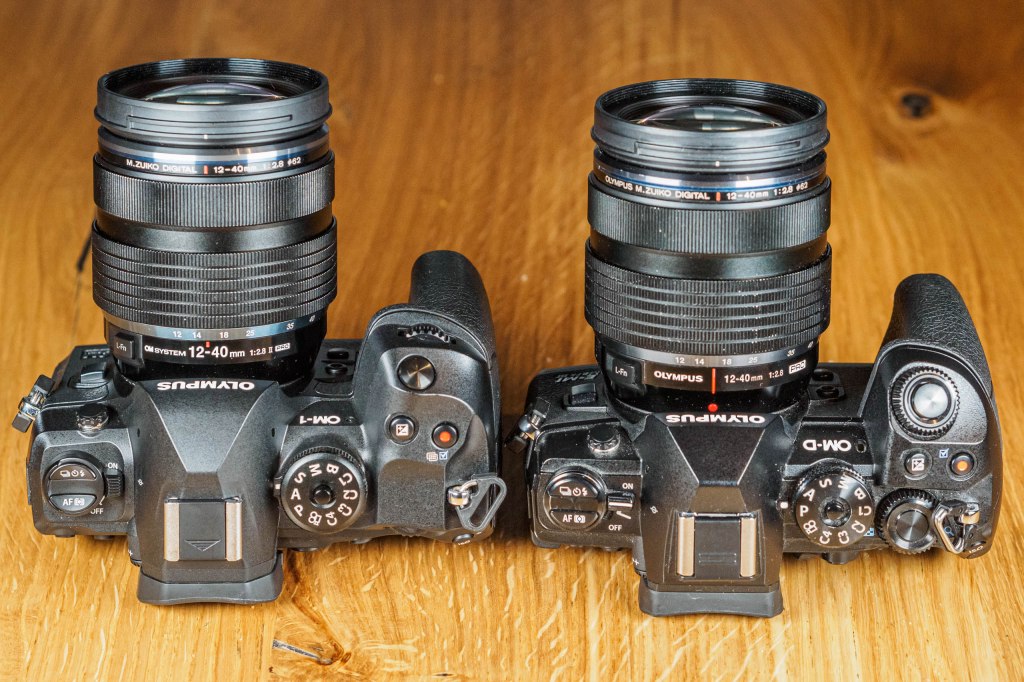
Olympus OM-D E-M5 series / OM-System OM-5: The E-M5 cameras have long been Olympus’ lightweight, mid-range mirrorless cameras, offering a lot of the features of the E-M1 cameras such as high-speed shooting and weather-sealing, but with a few cutbacks to reduce the body size and the price. OM-System has released its own version in the form of the O-M5, which lacks the OM-1’s subject-detection autofocus, but still has IP53 weather-sealing and Starry Sky AF.

Olympus OM-D E-M10 series: The E-M10 cameras are Olympus’ entry-level option, cheaper and smaller than either the E-M5 or E-M1 models. While they aren’t weather sealed, they offer a lot of functionality for the price, and still produce great images. The latest in the series is the Olympus OM-D E-M10 Mark IV; we haven’t seen an OM-System successor yet, but when this arrives, we expect the OM-10 will be a familiar name to many.
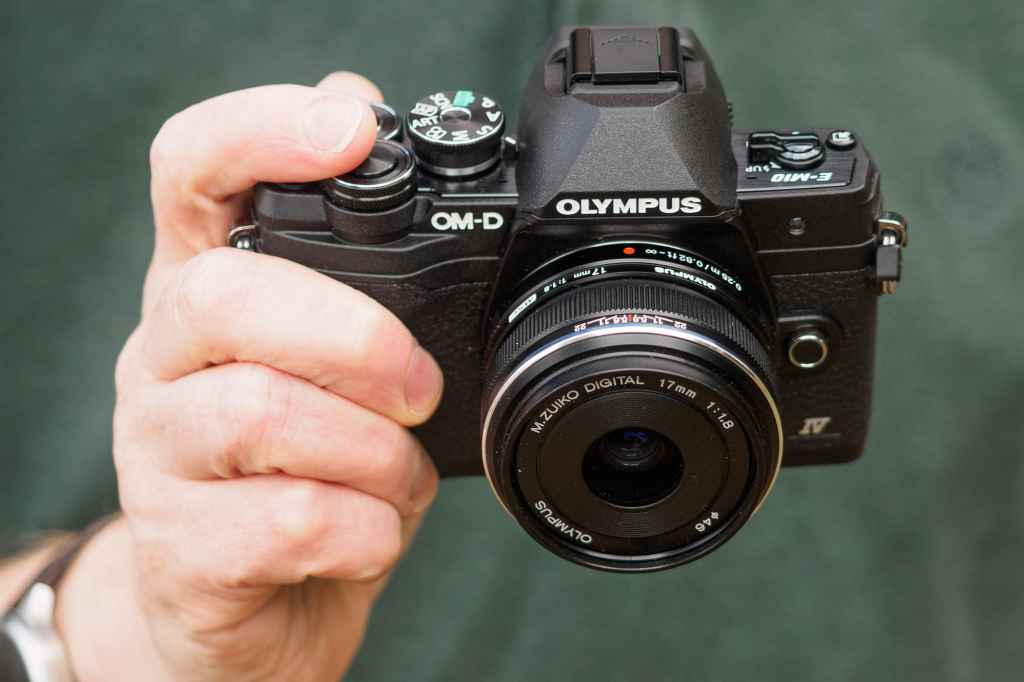
Olympus PEN series: Smaller and more streamlined than the OM-D cameras, the PEN mirrorless models are rangefinder style mirrorless cameras for those who still want to take great photos, but want a more stylish camera. The E-PLx range is more beginner friendly, whereas the E-Px range is a more premium option. Most PEN cameras also don’t have viewfinders, so you’ll need to be comfortable using the LCD screen.

Olympus ‘Tough’ series: The odd one out in the family, Olympus’ Tough TG cameras are waterproof compacts with fixed zoom lenses and 1/2.3-inch sensors. They’re some of the most popular tough cameras out there, and the most recent OM System TG-7, and Olympus Tough TG-6 have a reputation for being the best you can buy.
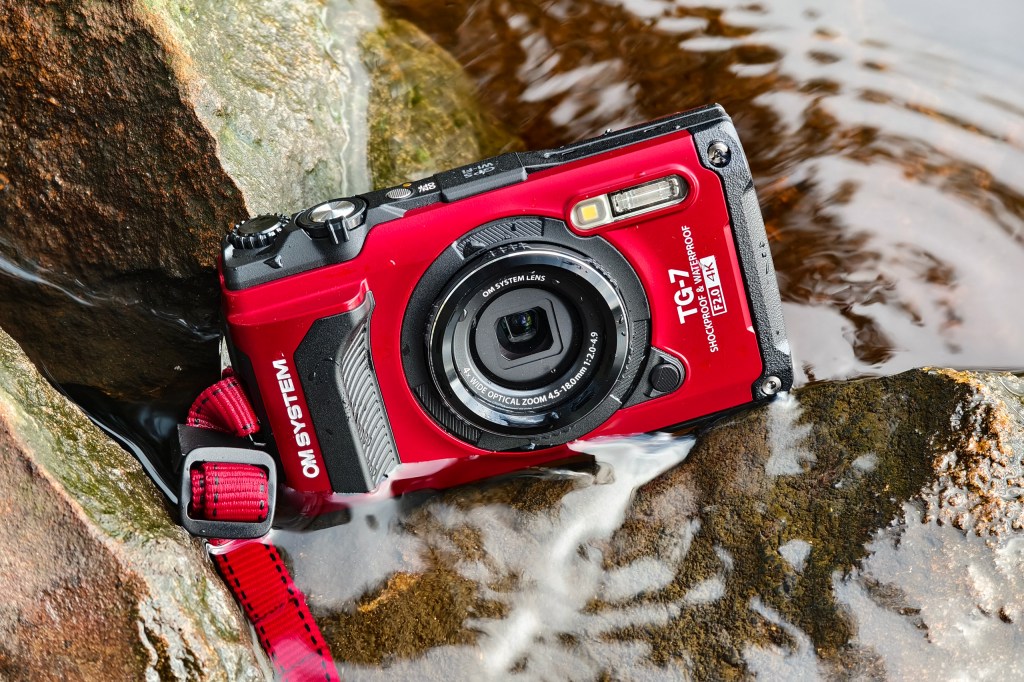
If you want some larger-sensor options, don’t forget to check out our guide to the best full-frame mirrorless cameras.
Best Olympus / OM-System cameras – frequently asked questions
Does Olympus still make cameras?
Yes, but that’s not what they’re called. The Olympus camera division was purchased by OM Digital Solutions, which has since given it a new life under the ‘OM-System’ moniker. We’ve seen the arrival of three cameras since then – first the OM-System ‘Olympus’ OM-1, so named to bridge the gap between the two brands, the subsequent OM-5, and the TG-7. The first two are effective continuations of the E-M1 and E-M5 digital lines, and share many features with their predecessors. They’re great cameras in their own right, and they also feel like Olympus cameras in use.
There are also plenty of Olympus-branded cameras that are still available and can be bought new, such as the Olympus OM-D EM10 Mark IV, the Olympus Tough TG-6 and the Olympus PEN EP-7.
Which Olympus cameras have Starry Sky AF?
The Olympus E-M1 Mark III and OM-System ‘Olympus’ OM-1 and OM-1 Mark II have Starry Sky AF; it has also been ported onto the newer OM-System OM-5.
Starry Sky AF is a popular feature in Olympus and OM-System cameras, a newly developed focusing algorithm that allows the camera to lock onto even the tiniest points of light in the night sky. Accurate focusing can be a real pain when you are shooting astrophotography, and as such, this feature is highly coveted among star-shooters.
What sensor is in Olympus cameras?
Olympus and OM-SYSTEM cameras are almost all Micro Four Thirds mirrorless cameras (there’s one exception – the waterproof Tough TG-6 uses a smaller 1/2.3-inch sensor and has a fixed zoom lens). Micro Four Thirds is a sensor standard and lens mount; the sensor itself measures 17.3mm x 13mm and produces images with a 4:3 aspect ratio. This is a smaller sensor size than full-frame (36mm x 24mm) or APS-C (23.6mm x 15.7mm), which means a compromise in terms of raw image quality and dynamic range. However, it offers up a number of advantages in other areas.
Micro Four Thirds cameras are able to offer a physically smaller camera body, as well as smaller lenses to match. This can make the system much more portable and well-suited to travel and street photography. Furthermore, the smaller sensor size of Micro Four Thirds incurs a 2x crop factor, effectively doubling the focal length of a lens. Mounted on an Olympus camera, a 50mm lens behaves like a 100mm lens, giving you telephoto reach from a smaller and cheaper lens compared to full-frame.
We think Micro Four Thirds has a lot to offer photographers and videographers alike – you can read more on why we love the system in our piece on why Micro Four Thirds offers something no-one else can.
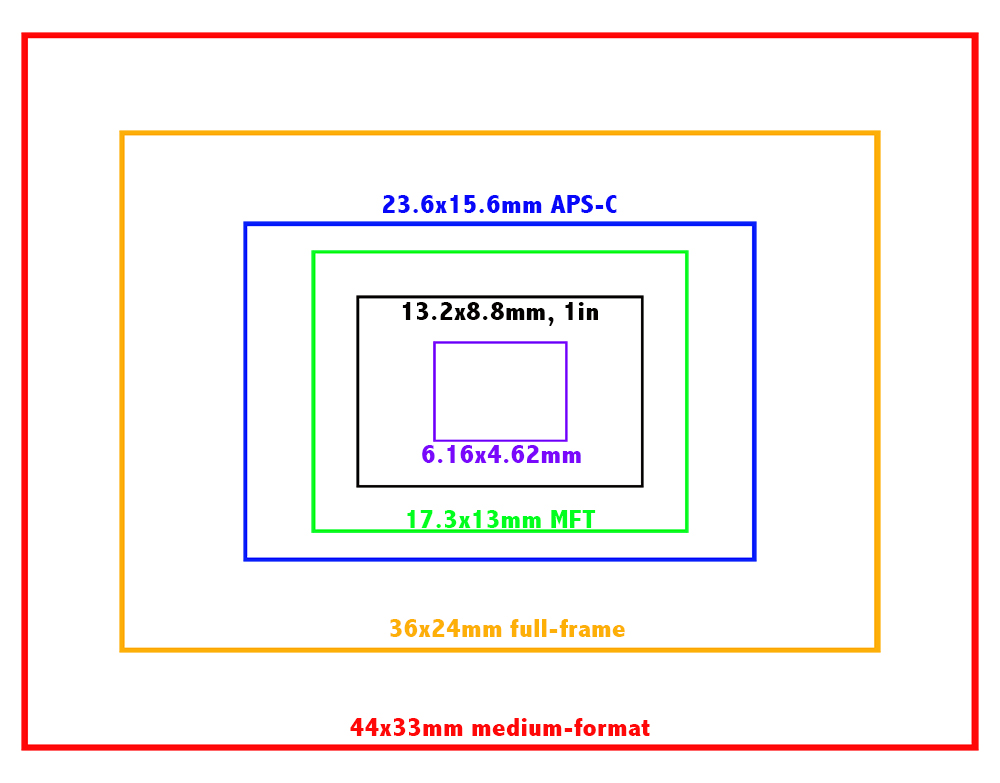
Can Olympus cameras use Panasonic lenses?
Yes. Panasonic Lumix G cameras are also part of the Micro Four Thirds standard, meaning that Panasonic Lumix G, Olympus and OM-SYSTEM cameras and lenses can all be used interchangeably. However, there’s a reason we’re specifying ‘Lumix G’ there – Panasonic also offers its full-frame line of Lumix S cameras, with Lumix S lenses to match. This system uses the ‘L’ lens mount, which was born as part of an alliance between Panasonic, Leica and Sigma. Bear in mind that features like stabilisation are sometimes less effective when mixing and matching brands – using a stabilised camera and lens from the same maker often work better in tandem to more potent effect.
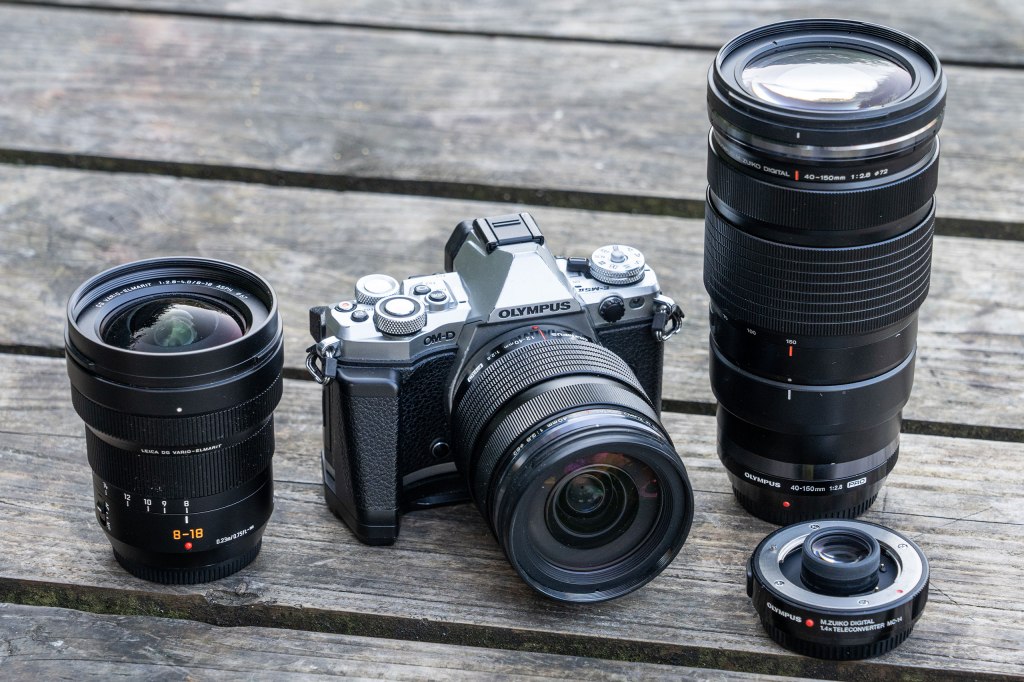
Micro Four Thirds cameras and lenses are not compatible with L-mount – so double-check the branding of any Panasonic lens before you buy it for an Olympus or OM-System camera. If it’s Lumix S, it won’t fit! You’ll also find a massive range of Micro Four Thirds lenses from other brands including Sigma, Samyang/Rokinon, Meike, Lensbaby, Voigtlander, Venus/Laowa, and others.
Are there professional Olympus cameras?
Absolutely! The Olympus and OM System slate includes a number of mirrorless cameras that offer the kind of high-end features and image quality demanded by professional photographers and videographers, such as fast burst rates, sophisticated autofocus and effective image stabilisation. The ‘1’ range are the top-end cameras, so this includes the newer OM System OM-1 and OM-1 Mark II, but also older models in the Olympus OM-D E-M1 range, including the OM-D E-M1 Mark II and the OM-D E-M1X. Where they might not be entirely suitable for professionals is in resolution, as Olympus and OM System have kept the megapixel counts to around 20MP. This is fine for many purposes (and the cameras do have high-res multi-shot modes to compensate) but is still worth being aware of if print-making is a significant part of your professional workflow.
How we test Olympus and OM System cameras
We test Olympus and OM System cameras primarily by using them to take photographs and video in a wide range of real-world situations. We evaluate their control layouts and handling, and the usability of their viewfinders and screens. We assess their autofocus across a range of different subjects and shooting scenarios and check their continuous shooting capabilities, as well as any specific modes these models feature.
We also examine the effectiveness of their in-body image stabilisation systems (IBIS). Last but by no means least, we critically evaluate the image quality, in both JPEG and raw, including resolution, high-ISO noise, and dynamic range. We then take all these factors into account, along with such things as portability and lens systems, when giving our final conclusion and score. You’ll find the full breakdown of how each camera has performed in our full reviews.
Further Reading
- APS-C Vs Full Frame (inc MFT) – which sensor size is best?
- Why Micro Four Thirds offers something no one else can
- Best Micro Four Thirds lenses to buy

